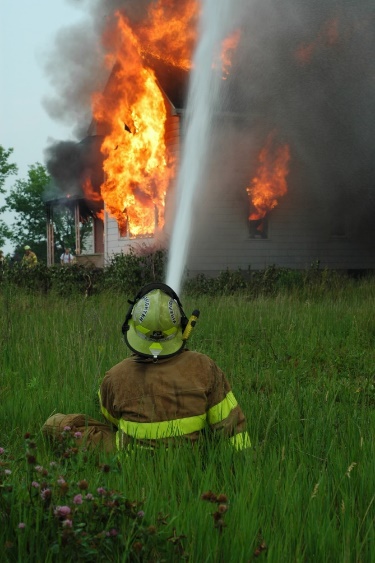In an emergency, Boeing directs pilots to follow these steps:
- Maintain aircraft control.
- Analyze the problem.
- Take appropriate action.
- Maintain situational awareness.
Tammy Jo Shults was a U.S. Navy pilot and the captain piloting a Boeing 737 passenger aircraft when an engine blew at 32,000 feet in 2018. She relied on the steps above along with her extensive experience and training to land the plane and save 148 lives. She suggests we remove the word “aircraft” and make this our life guide. Interested in more about Tammy Jo, read her book, Nerves of Steel: How I followed My Dreams, Earned My Wings, and Faced My greatest Challenge.
~ ~ ~ ~ ~ ~ ~ ~ ~ ~ ~ ~ ~ ~ ~ ~ ~ ~ ~ ~ ~ ~ ~ ~ ~ ~ ~ ~ ~ ~ ~ ~ ~ ~ ~ ~ ~ ~ ~ ~ ~ ~ ~
Many years ago, living in an apartment with an electric stovetop, which by-the-way I hated, I slapped a glob of Crisco in a pan, turned the burner up to high and waited—waited—waited (at least five seconds) for the grease to get hot enough to fry . . . something. I don’t even remember what. I do recall getting tired of waiting.

I decided to go make the bed, expecting the Crisco to be melted and hot when I returned. Surely, it only took a couple of minutes before I went back into the kitchen, but that was long enough for the grease to ignite. Flames tapped up against the bottom of the overhead hood as smoke developed into a small but growing presence.
I turned the burner off, but because it would take ages for the heat to dissipate, I took a couple of pot holders and v-e-r-y carefully moved the pan to a burner that was off. I positioned the handle away from me, so I wouldn’t bump the pan.

As you can imagine, the grease was still on fire. I had no idea how long it might take to burn out. Certainly, something more had to be done.
My first inclination was to drench the flames with water. Water puts out fire, right? But then, I wondered how the grease might react. Would the dousing splash grease and spread the fire? I didn’t relish losing control of the situation. Not good.
If I can’t pour water on the fire, maybe I should take the fire to the water. Then I wondered how high the flames would reach if not hindered by the overhead hood. If they reached the ceiling, I’d be in trouble. And what if I spilled some of the fiery grease on my way to the sink? How would I keep hold of the pan while trying to put fire out on my clothing or the floor? What if I dropped the pan?! Yikes! And even if I made it to the sink, what if the curtains caught fire? Every option seemed to have too many dangerous variables. Not good.
Moving the pan was not an option. Water was not an option. OK. What does a fire need to keep burning? Ah, yes, it needs something to burn, in this case, grease. I already realized there was no safe way to get rid of that. So, what else?
Let’s see; I’ve seen people blow on kindling to start a campfire. Got it! Fire needs air. I took a huge flat cover out of the cupboard an imagined how I might use it. Do I have to put the lid at the top of the fire and move it down to the pan? It seemed to me that a descending lid would not contain the fire. The flames would probably curl around the edges of the cover and burn my arms. My clothing might catch fire. Not good.
But if I cut off the air right at the top of the pan, the fire in the pan would go out. And then the air above the pan, now deprived of its fuel, would quickly burn out. Good.
I set the edge of the lid on the edge of the pan and gently slid it across. Problem solved.
Now, let’s go through this process to see how the steps I took match Tammy Jo’s life guide.
1. Maintain Control.
Had I failed to stay calm, I might have set myself and the apartment on fire. I didn’t realize until many years later that grease is one of the most common causes of house fires, generally starting when someone tries to dump the pan in the sink. Frighteningly, that was also one of my early inclinations. But my desire to stay in control compelled me to scrutinize other options and consequences.
2. Analyze the Problem.
Since the overhead hood kept the flames off the wood cabinets, there was no immediate danger. Moving the pan off the heat source also made sense. But every next step had to be carefully weighed. The worst thing that could happen at this point was a mistake I could make.
3. Take Appropriate Action.
It might seem like I spent twenty minutes thinking about my options, but the entire process probably lasted just a minute or two. Taking time to think before acting is crucial. And even then, be ever so alert. Something could still go wrong.
4. Maintain situational Awareness.
Once the fire was out, I looked over the kitchen to make sure nothing combustible was anywhere near the pan.
~ ~ ~ ~ ~ ~ ~ ~ ~ ~ ~ ~ ~ ~ ~ ~ ~ ~ ~ ~ ~ ~ ~ ~ ~ ~ ~ ~ ~ ~ ~ ~ ~ ~ ~ ~ ~ ~ ~ ~ ~ ~ ~
Now, it’s YOUR turn. Consider an emergency or difficult situation you’ve experienced. Use the steps to measure your responses. If you messed up, don’t worry. Mistakes provide valuable lessons. Consider how you could have done better. Practice the scenario in your imagination. Discuss options with others. Ask people: What would you do if _________?
This works for business, academic, and personal situations. Think about a recent quarrel and the outcome you had hoped for. Did you get there? If not, what went wrong?
Always consider the endgame before you move forward. Engaging with someone you don’t want to lose might be different from an interacting with someone you are open to letting go. When you start to feel like you’re losing control, gently make plans to continue the discussion later. Take the time you need to calm down and think things through.
Remember, even though the first step is to maintain control, that does not include others or outcomes. That means YOU—your words, tone of voice, facial expressions, body language. This also includes your dedication to resolution. If all you want is to blow off steam, you should still consider the outcome first. If you don’t care about that person’s feelings, would this behavior damage your reputation? Think about ALL outcomes.
Some people have a tendency to remain calm in all kinds of situations. Others panic. Is this you? If so, start training your mind now. Practice makes pretty good, and that’s good enough.
Visualize yourself staying calm, working the steps, and making productive decisions in different situations: prior, present and future. Keep up the critical thinking practice by discussing options with friends. This practice will serve you well in many ways.
Good luck and stay safe out there.
Work Cited
Tammie Jo Shults.” Youtube, Problem Solving at the Highest Level: What Teachers and Students Can Learn From Tammie Jo Shults. 3 May 2022. Accessed 16 June 2022.

